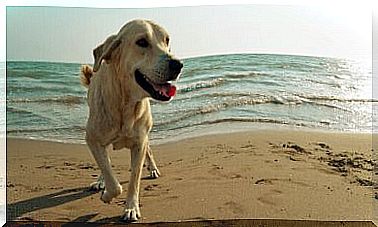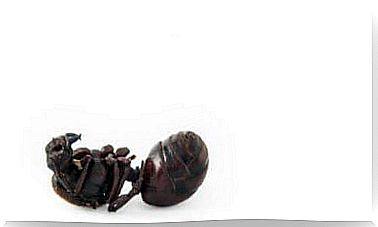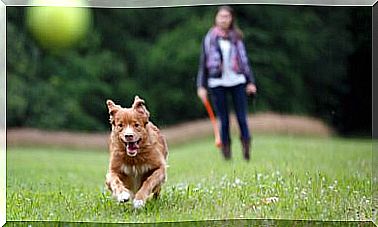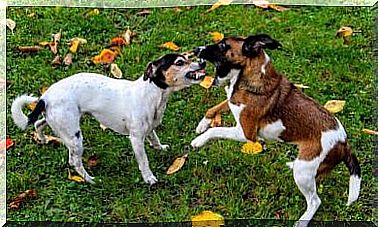Alzheimer’s In Dogs: Truth Or Lie?
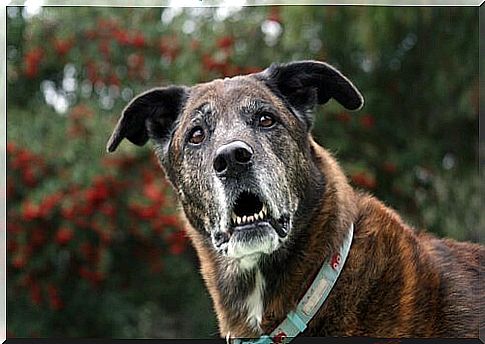
Perhaps your pet is reaching old age and you have noticed that its mind and body are deteriorating. Some of the most common signs of aging can look like Alzheimer’s symptoms. But is there Alzheimer’s in dogs?
Cognitive Dysfunction Syndrome in Elderly Dogs
This chronic disease is defined as the “set of behavioral and cognitive changes observed in some dogs during aging”. It is a neurodegenerative disorder characteristic of older animals and affects about 35% of older dogs. In a way, we can say that it is Alzheimer’s in dogs.
In the brain of every animal, just as it happens in people’s, it is possible to observe a series of changes. According to the University of Santiago de Compostela, they include:
- cortical atrophy
- Thickening and calcification of the meninges
- dilation of the ventricles
- Glia cell reactivity
- Decrease in the number of neurons
The basis of this disease is the decrease in the animal’s cognitive capacity. According to the American Kennel Club association, it is estimated that up to 60% of puppies between the ages of 15 and 16 will eventually develop the disorder.
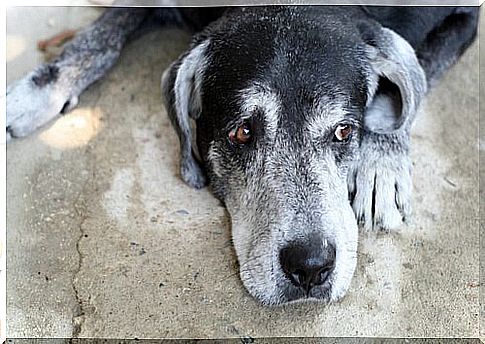
Most Common Symptoms Confused With Alzheimer’s In Dogs
The main problem encountered when studying this disease is that it is an underdiagnosed disorder. In addition, its symptoms can lead owners to mistakenly think it is Alzheimer’s in dogs.
Veterinarians use the acronym DISHAA, in English, to refer to the most significant symptoms and changes that animals with Cognitive Dysfunction Syndrome experience, such as:
- disorientation
- Little interaction with people and animals
- Sleep/changes in sleep cycles
- Changes in learning and memory
- Changing your activity
- Anxiety
As for disorientation, dogs suffering from this syndrome tend to wander aimlessly around the house and surroundings. He can confuse the door when leaving the house and even spend long periods of time looking at the walls.
This syndrome also affects the animal’s social interactions, as its behavior with people changes profoundly. They tend to become more dependent, although some may show apathy.

There is no middle ground when analyzing these behavioral changes. However, if your dog used to be affectionate and suddenly spends more time alone or becomes anxious, you may need to take him to the vet. Each animal’s personality is different, so symptoms can vary widely.
Changes in sleep cycles are also quite common in dogs affected by the syndrome. Animals can suffer from insomnia and walk nervously around the house or cry for no apparent reason. You will also notice that they sleep more during the day due to these sleep disruptions.
The disorientation already mentioned, moreover, will make your dog no longer pay as much attention to what you say. It might seem like he forgot some habits he’s already learned. It will also be harder to get your attention. Even so, separation anxiety is typical in these cases. Also, you may be afraid to travel or meet new people.
disease diagnosis
When deciding to take your pet to the veterinarian, the specialist will likely run a series of routine tests that will help make a definitive diagnosis.
What is certain is that there are other diseases with similar symptoms, so it is important to rule them out. In individuals with the syndrome, it is possible to observe deposits of a protein called β- amyloid, which can help to reach a conclusive diagnosis.
The most common diagnostic tests include:
- Physical examination and neurological exploration of the animal
- Analysis of the animal’s medical history
- Blood count
- Biochemical profile for measuring thyroid hormones, among others
- X-ray and ultrasound exams




